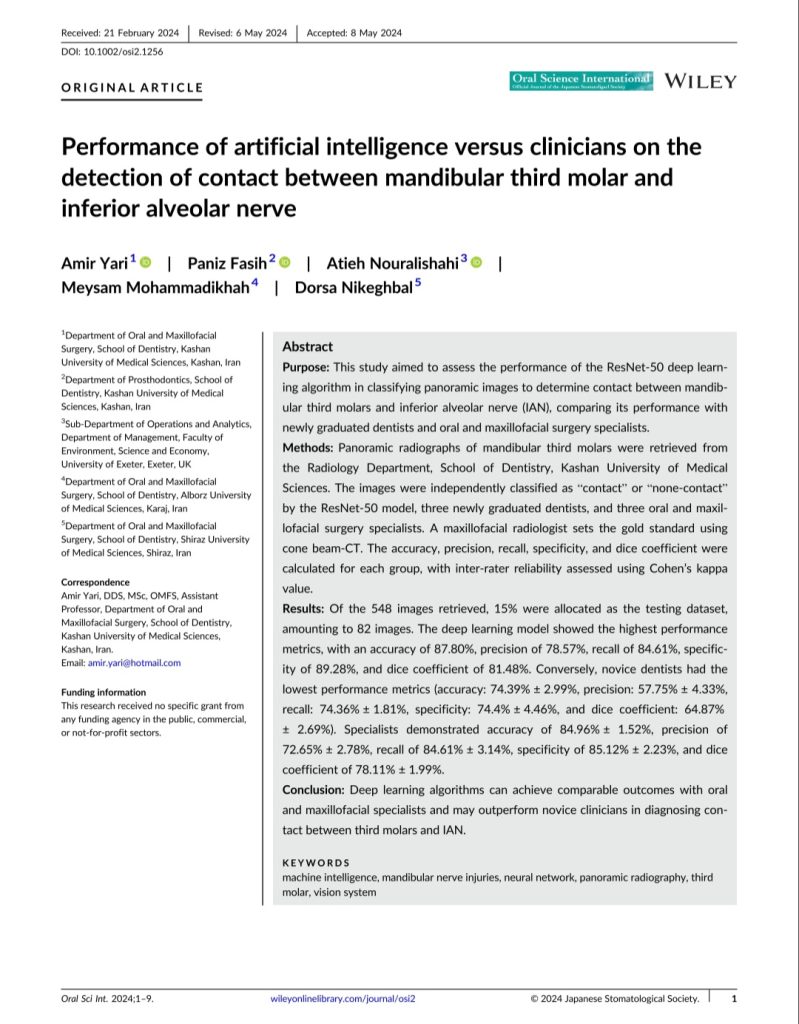
Performance of artificial intelligence versus clinicians on the detection of contact between mandibular third molar and inferior alveolar nerve
Amir Yari et al
Purpose
This study aimed to assess the performance of the ResNet-50 deep learning algorithm in classifying panoramic images to determine contact between mandibular third molars and inferior alveolar nerve (IAN), comparing its performance with newly graduated dentists and oral and maxillofacial surgery specialists.
Methods
Panoramic radiographs of mandibular third molars were retrieved from the Radiology Department, School of Dentistry, Kashan University of Medical Sciences. The images were independently classified as “contact” or “none-contact” by the ResNet-50 model, three newly graduated dentists, and three oral and maxillofacial surgery specialists. A maxillofacial radiologist sets the gold standard using cone beam-CT. The accuracy, precision, recall, specificity, and dice coefficient were calculated for each group, with inter-rater reliability assessed using Cohen’s kappa value.

Results
Of the 548 images retrieved, 15% were allocated as the testing dataset, amounting to 82 images. The deep learning model showed the highest performance metrics, with an accuracy of 87.80%, precision of 78.57%, recall of 84.61%, specificity of 89.28%, and dice coefficient of 81.48%. Conversely, novice dentists had the lowest performance metrics (accuracy: 74.39% ± 2.99%, precision: 57.75% ± 4.33%, recall: 74.36% ± 1.81%, specificity: 74.4% ± 4.46%, and dice coefficient: 64.87% ± 2.69%). Specialists demonstrated accuracy of 84.96% ± 1.52%, precision of 72.65% ± 2.78%, recall of 84.61% ± 3.14%, specificity of 85.12% ± 2.23%, and dice coefficient of 78.11% ± 1.99%.
Conclusion
Deep learning algorithms can achieve comparable outcomes with oral and maxillofacial specialists and may outperform novice clinicians in diagnosing contact between third molars and IAN.
Link to original article: https://onlinelibrary.wiley.com/doi/full/10.1002/osi2.1256